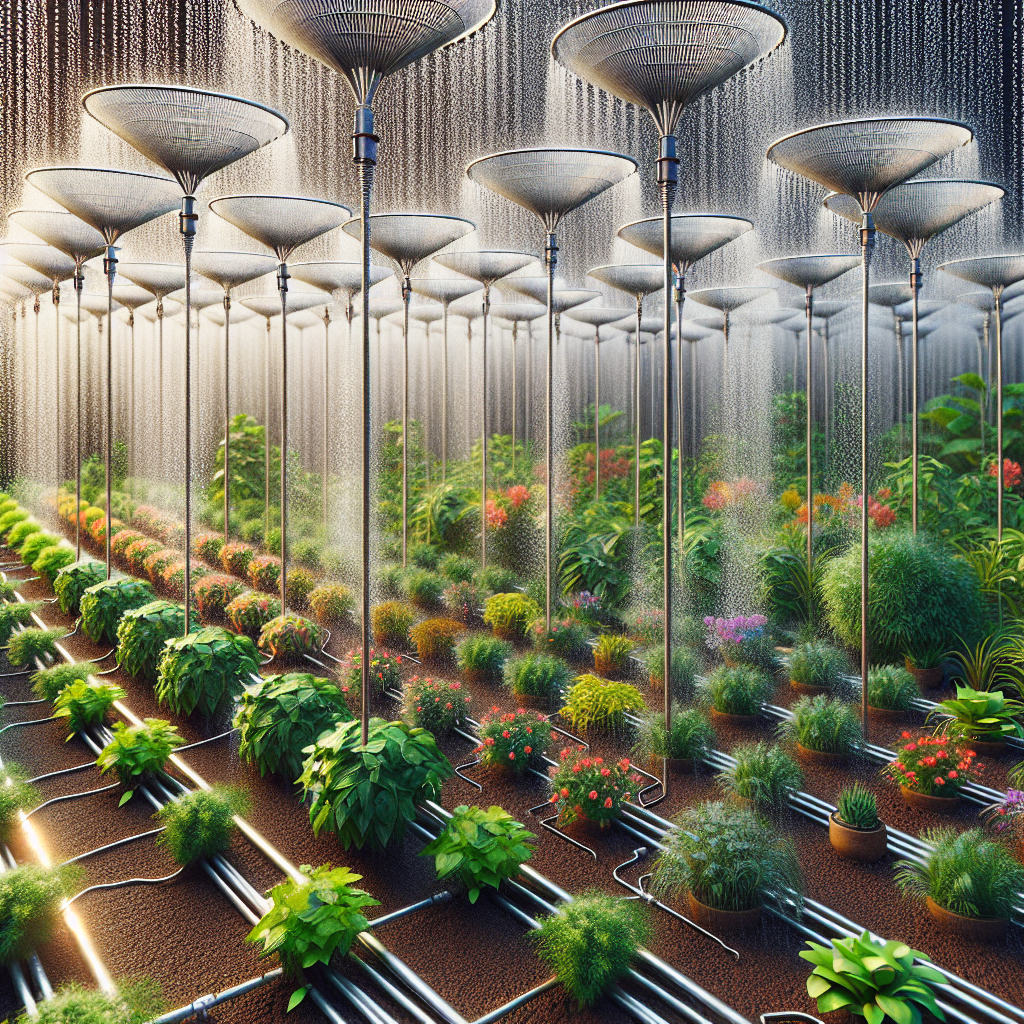The Art of Efficient Watering: Embracing Slow Drip Irrigation
Water is a precious resource that sustains all life on Earth. In an era of climate change and increasing water scarcity, it is essential to find sustainable and efficient methods of watering our plants. One such method is slow drip irrigation, which has gained popularity among gardeners and farmers alike for its numerous benefits. In this article, we will explore the art of efficient watering through the practice of slow drip irrigation.
Slow drip irrigation, also known as trickle irrigation or micro-irrigation, is a technique that delivers water directly to the plant roots at a slow and steady pace. Unlike traditional sprinkler systems that distribute water in large volumes over a wide area, slow drip irrigation provides water precisely where it is needed, minimizing waste and maximizing efficiency.
One of the primary advantages of slow drip irrigation is water conservation. Traditional watering methods often result in significant evaporation due to exposure to sunlight or wind. In contrast, slow drip systems minimize evaporation by delivering water directly to the soil, reducing overall water usage by up to 50%.
Furthermore, slow drip irrigation promotes healthier plant growth by ensuring optimal moisture levels. By delivering water directly to the root zone, plants avoid stress caused by inadequate or excessive watering. This method also prevents surface runoff, which can lead to nutrient loss and soil erosion.
Another benefit of embracing slow drip irrigation is weed control. Traditional watering techniques often wet large areas of soil indiscriminately, providing an ideal environment for weed germination and growth. Slow drip systems avoid wetting non-targeted areas, reducing weed competition for resources.
Furthermore, slow drip irrigation promotes the development of deeper root systems. When plants are regularly exposed to small amounts of water over extended periods, their roots are encouraged to grow deeper in search of moisture. This results in stronger and more resilient plants that can better withstand drought conditions.
Implementing a slow drip system may seem daunting at first, but it is relatively straightforward. The first step is to determine the water requirements of your plants. Factors like species, size, and growth stage should be considered to establish a watering schedule that meets their specific needs.
Next, assess the area where you intend to install the system. Take note of factors such as soil type, slope, and sunlight exposure. These factors will influence the layout and design of your slow drip system.
Once you have gathered all the necessary information, it is time to select the appropriate equipment. Slow drip irrigation kits can be found at most garden supply stores or online retailers. These kits typically include tubing, emitters, connectors, and a pressure regulator.
The installation process involves laying out the tubing along the desired irrigation lines. Emitters should be placed near the plants or directly at their base for optimal water delivery. Use connectors to join sections of tubing together and a pressure regulator to ensure consistent water flow.
It is crucial to periodically inspect and maintain your slow drip system to ensure its efficiency. Check for leaks or clogged emitters and clean or replace them as needed. Adjust the water flow rate according to weather conditions and plant requirements.
In conclusion, embracing slow drip irrigation is a sustainable solution for efficient watering that promotes water conservation, healthier plant growth, weed control, and deeper root development. By delivering water directly to plant roots at a slow pace, this method minimizes waste and ensures optimal moisture levels. Despite its initial setup requirements, implementing a slow drip irrigation system is relatively straightforward and manageable for both small gardens and large-scale agricultural operations.
Given the increasing global demand for food production in an era of diminishing water resources, adopting efficient watering methods like slow drip irrigation is not only practical but also essential for preserving our environment while providing sustenance for future generations.













